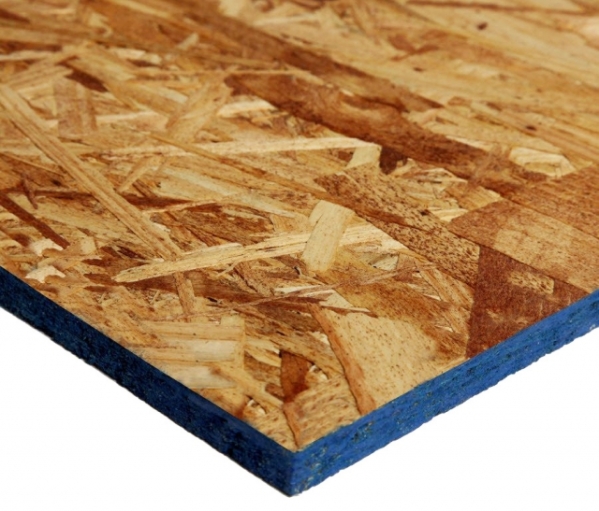Oriented Strand Board is an engineered particle board made by gluing wood flakes off cross oriented layers. The glue is comprised of mostly wax and some synthetic resin. The resin is typically made of formaldehyde or isocyanate, which help make the boards moisture resistant. Because of the mechanical properties caused by the adhesive, pressing, and strand orientation OSB is well suited for load bearing applications. because of this it is heavily used for roof and floor sheathing.

OSB is divided into types based on it’s intended use:
– OSB-1: General purpose for interior use, furniture, or otherwise dry conditions.
– OSB-2: Load bearing boards for use in dry conditions.
– OSB-3: Load bearing board for use in humid conditions.
– OSB-4: Heavy-Duty load bearing board for use in humid conditions.
The following are building codes in which OSB is regulated:
-BOCA: Building Officials and Code Administrators International, CABO: Council of American Building Officials, ICBO: International Conference of Building Officials, ICC: International Code Council, NBCC: national Building Code of Canada, SBCCI: Southern Building Code Congress International.

‘Exposure’ is a panel classification addressing durability with respect to weather/moisture exposure. Exposure 1 for example, is more resistant to moisture and is commonly used when extended weather/moisture exposure is anticipated. Sheathing panels are also rated on structural strength. For example, a structural 1 panel is used when cross panel and shear strength are of particular importance. OSB is commonly span rated, telling one the thickness of panels needed based on the span of the studs or joists it will be attached to. OSB will commonly retain water for a shorter period of time than plywood, however it tends to swell and weaken upon excessive water exposure, more so than plywood.